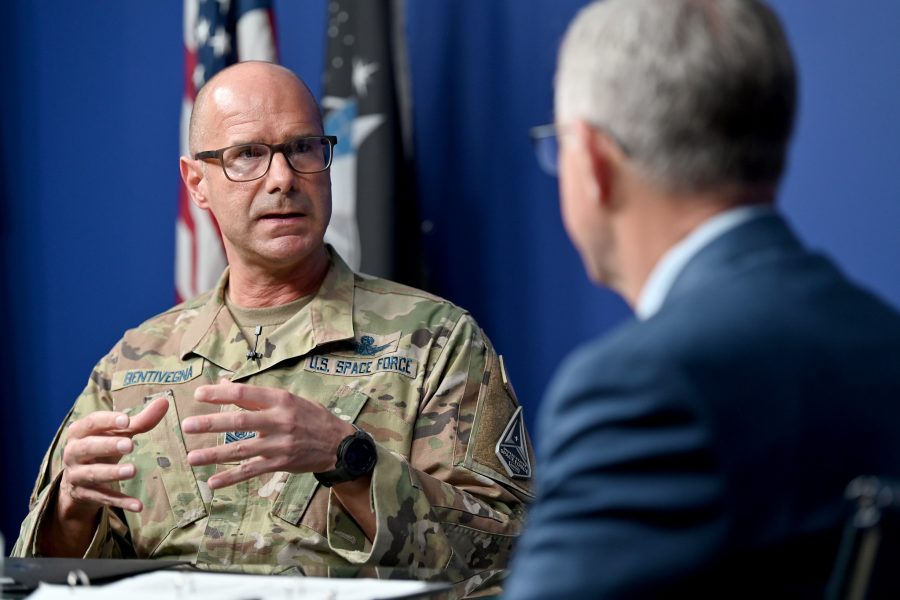
What Kinds of Jobs Can Part-Time Guardians Expect? (Image Credit: airandspaceforces)
Those hoping to join the Space Force on a part-time basis may find jobs involving test, evaluation, training, or planning, or which involve being called to temporary full-time status for deployments or multiweek TDYs the same way Reservists in other services are placed on Active orders, according to the top enlisted Guardian.
Speaking at an AFA Warfighters in Action fireside chat on May 10, Chief Master Sergeant of the Space Force John F. Bentivegna said the service is still working through the details of what a part-time force would look like under the Space Force Personnel Management Act, a bill signed in December which does away with “regular” and “reserve” components in favor of a combined full-time and part-time system.
The advantage of such a system, Bentivegna said, is that it gives Guardians the ability to adjust to changing life circumstances more easily, rather than jump through the bureaucratic hoops of switching between components.
“It adds optionality to the Guardians, so we can still leverage that deep expertise that Guardians bring to the table,” he said. It also clears up any chain-of-command conflicts that might arise from having two components in such a small service, which “isn’t necessarily beneficial for unity of command or readiness.”
The Space Force aims to open up full-time positions this summer for currently-serving Air Force Reservists. That’s the easy part, Bentivegna said, since the branch already has the pay, benefits, and other systems for full-time Guardians. The tricky part is doing the same thing for part-time Guardians.
“Where we have to work on is: define part-time … and not only defining it, but also how do I pay you, how do the systems track you? We don’t have that build yet,” he said.
The Space Force Personnel Management Act gives the service five years to figure it out, but the top enlisted Guardian said the goal is to move much faster than that, perhaps in a year or so. In the meantime, they are figuring out what jobs would work best under the part-time construct. Chief of Space Operations Gen. B Chance Saltzman first hinted at those jobs in a March memo.
“I don’t anticipate part-time Guardians maintaining mission-ready status in 24/7 employed-in-place operations,” he wrote. “Instead, we will leverage their expertise in institutional and service-retained functions like education, training, and test units or key staff positions.”
But Guardians are eager for more details. When asked what concerns he hears most from Guardians about the part-time/full-time construct, Bentivegna said that many of the questions “are based on us explaining our vision on full-time and part-time.”
“The employed-in-place mission sets when you have to be combat mission-ready, and the commit phase that we talked about, we don’t know whether or not that really is conducive to a part-time Guardian,” he said. “They may not be ‘Well, I’m a crew dog and I work shift.’ Maybe that’s not part-time.”
Instead, the part-time model “really fits in on deployable capabilities,” Bentivegna explained. “That’s a traditional model where you come on full-time orders from part-time, you spin up, you pack up your gear, you maybe go downrange some place, you do your six or seven months, you come back and reconstitute and then you go back to part-time.”
That work might include testing and evaluating a new weapons systems or acting as an adversary at a Red Flag or other major exercise for a few weeks, missions which put to good use the expertise part-timers bring from their civilian jobs, Bentivegna said. Now the service has to communicate to Guardians and potential part-timers what that looks like and “paint the vision where they can see themselves.”
“I want to be able to tell those stories and get the part-timers, if you will, excited about where we really need them in the future under this Personnel Management Act vision,” he said.








